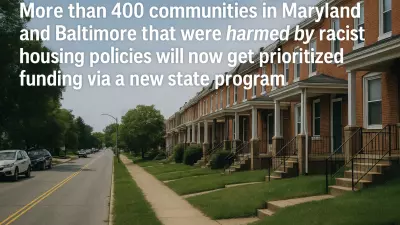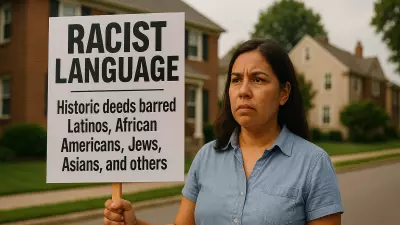A new report calls for Wisconsin to foster a corps of community health workers across the state, governed by a new set of professional standards and paid by the state’s Medicaid program.

That is the lead proposal offered by the Governor’s Health Equity Council, which issued its final report Monday.
The report includes a total of 20 recommendations. The first six directly focus on the state’s health care system and institutions, starting with creating a certification standard for community health workers and allowing them to be reimbursed under the Wisconsin Medicaid program.
The remaining 14 recommendations include some others that also directly relate to the health care system, as well as others with a much broader reach.
In casting a wide net on policy that its recommendations address, the report states, the council takes aim at the impact of “economic, social and the physical environment” and people’s health.
Gov. Tony Evers established the Governor’s Health Equity Council early in his first term, a year before the COVID-19 pandemic cast a spotlight on public health, but council meetings didn’t begin until September 2020, when the pandemic exposed sharp disparities in the health care system.
The council “recognized that despite the tremendous and disparate impacts the once-novel COVID-19 pandemic had on our collective well-being and longevity, these outcomes were the results of preexisting gaps in access to critically important resources such as good paying jobs, safe and quality education and housing, social and community supports, access to health care, and clean water and air,” the report states.
Moreover, those disparities “were experienced unevenly based on where you resided, how much income and wealth you have access to, or your racial or ethnic background.”
Death rates and health outcomes
A University of Wisconsin Population Health Institute study ranked Wisconsin’s 72 counties by combining several pieces of data: rates of death below age 75, the percentage of babies born who weighed less than 2,500 grams — about 5-1/2 pounds — and survey data in which people answered questions about their health.
The equity council report notes urban as well as rural parts of the state are among those with the poorest outcomes: Milwaukee County ranked 70 out of 72, while Forest and Menominee counties, both rural, were the only counties that ranked lower.
Age-adjusted death rates factor in the ages at which people die, weighting deaths among younger people higher. By that measure, the rates of death per 100,000 among African Americans and American Indian residents of Wisconsin have been markedly higher than the overall average for the state, according to data included in the equity council report. The white population tracks the statewide average, and age-adjusted death rates for the Asian and Hispanic populations were lower than the average.
All groups saw a spike upward in 2020, the first year of the COVID-19 pandemic after several years of mostly trending downward. The increases were sharper among Hispanic, African American and American Indian populations compared with the average Wisconsin population or the white population.
Black infant mortality rates were more than three times those for white infants, according to the equity council. American Indian, Asian and Hispanic rates were also higher, though less dramatically.
“Improvements in our collective health will require intentional, proactive, and consistent action-taking and investment in social and public policy that prioritizes Wisconsinites’ health and well-being,” the report states.
The council based its work on principles emphasizing fairness and ensuring policy serves all state residents. “In Wisconsin, we do not leave anyone behind,” one principle states. Another declares that “all Wisconsinites should have a say in decisions that affect our lives.”
The report challenges policy frameworks that focus primarily on individual choice and responsibility without addressing how resources and other circumstances might constrain the choices that people are able to make and the limits of their personal circumstances.
“Our individual choices and decisions alone cannot address issues such as polluted water, housing insecurity, or lack of family-supporting jobs, as it was not our choices and decisions that created these problems in the first place,” write the council’s chair, Gina Green-Harris, and vice-chair, Michelle Robinson, in their forward to the report.
Green-Harris is director of the Center for Community Engagement and Health Partnerships at the University of Wisconsin School of Medicine and Public Health. Robinson is the director of the Office of Health Equity at the Wisconsin Department of Health Services (DHS).
The recommendations are aimed at “removing social, economic, and physical barriers impacting individuals’ and communities’ opportunity to access their greatest health and wellness potential,” they write.
Proposal details
In addition to the recommendation for a new certification for community health worker, the first six proposals include:
- extending postpartum coverage for mothers whose childbirth is covered by Medicaid for a full year after they give birth;
- creating a program for family planning and emergency services for immigrants who currently aren’t eligible for Medicaid;
- providing dental health for children covered by Medicaid;
- funding for schools and employers to promote health care careers to students, with improved training and professional pathways for students to follow;
- funding to extend broadband internet access in urban and rural communities where access is inadequate.
The report’s other proposals directly tied to health care include improving health care for pregnant women who are incarcerated, as well as policies to more broadly and completely share health data and to review maternal deaths.
In addition, there are proposals that address economic conditions, such as increasing the minimum wage and expanding home ownership. There are also proposals to make the health equity council a permanent body, and to create a council on transgender health and safety that would provide training, technical support and analysis and recommendations across government agencies.
The report anticipates opposition from some ideological quarters, although it does not lay out a specific plan for implementing its proposals.
“In a time where we should be coming together in unity to heal our state, we have allowed political agendas to polarize our state to the point that we as a community of people have become disjointed and disconnected,” the report states. “We are currently in a state of political stalemate, with a refusal to recognize how the historical injustices of the past continue to plague us as a state (and country).”
Nevertheless, it argues, there are practical reasons to address the issues that the report raises.
“Exclusion, discrimination, inequitable policies, programs, and access to resources are not only morally wrong,” the report concludes, “but they are also economically shortsighted and contribute to less freedom, and less well-being, for all of us.”
Deputy Editor Erik Gunn reports and writes on work and the economy, health policy and related subjects, for the Wisconsin Examiner.
The Wisconsin Examiner is a nonpartisan, nonprofit news site offering a fresh perspective on politics and policy. As the largest news bureau covering state government in Madison, the Examiner offers investigative reporting and daily coverage dedicated to the public interest. We take our inspiration from the motto emblazoned on a ceiling in our state Capitol: “The Will of the People Is the Law of the Land.”







